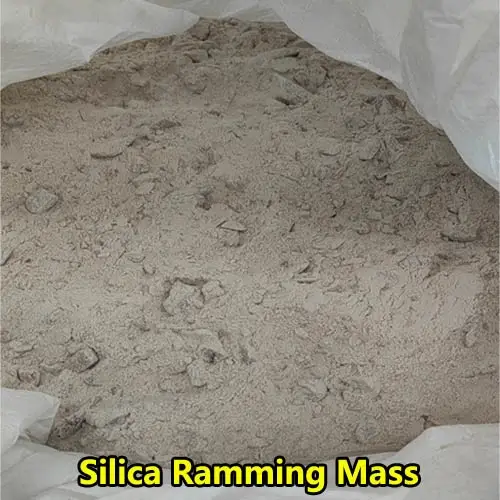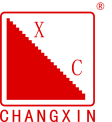Medium frequency furnace furnace lining materials, also known as medium frequency furnace refractory materials, medium frequency furnace dry vibration material, medium frequency furnace knotted material, medium frequency furnace pounding material, divided into acidic, neutral, alkaline furnace lining materials, acidic furnace lining materials are based on high purity quartz, fused quartz as the main raw material, with composite additives for the sintering agent; neutral furnace lining materials are based on alumina, high alumina materials as the main raw material, with composite additives for the sintering agent; alkaline furnace lining materials are based on high-purity Alkaline furnace lining materials are made of high purity fused corundum, high purity fused magnesia, high purity spinel, and high purity sintering agent with composite additive.
alkaline furnace lining materials are made of high-purity fused corundum, high-purity fused magnesia, high-purity spinel as the main raw materials, and compound additives as sintering agents.
There are three kinds of medium frequency furnace lining materials, one is acidic furnace lining, dry pounding molding by quartz sand, binder for borax or boric acid; another is magnesium sand dry pounding molding, binder is the same as borax or boric acid. A kind of neutral furnace lining, by high alumina bauxite clinker pounding molding. In recent years, following the development of technology, the emergence of a variety of new materials, medium frequency furnace lining materials also appeared in many new furnace lining materials.
1、Acidic furnace lining
Acidic furnace lining is mainly quartz sand, it is inexpensive, widely distributed, good insulation, low construction requirements, the use of less defects, the production is more stable, but the quartz sand refractoriness is low, on the casting of large intermediate frequency furnace can not meet the requirements. And in the warming process, there is a secondary phase change, poor standard stability, chemical stability is not satisfactory, simple and slag reaction and constitute corrosion. In order to prevent these defects can use electrofused quartz, which has a high content of silica content greater than 99%, refractoriness advances significantly, close to the melting point, and there is no secondary phase change in the warming process, there is no warming standard changes, thermal shock stability is also greatly advanced.
2、Neutral furnace lining
Electrofused corundum is chosen as the lining of medium frequency furnace, because the melting point of white corundum is as high as 2050℃, the hardness is as high as grade 8, wear-resistant, high temperature resistant, and the chemical stability is also better than quartz. It is suitable for high temperature cast steel or large furnace lining. Characterized by the same phase change and thermal expansion coefficient of large defects, in practice, participation in spinel micro-powder can significantly advance corrosion resistance and standard stability.
3、Alkaline furnace lining
Traditional alkaline furnace lining selection of magnesium sand dry pounding molding, the advantages of high refractoriness, close to 2800 ℃, the defect is the expansion coefficient is large, easy to crack, magnesium sand furnace lining corrosion resistance, long service life, low price, the use of a very wide range of use, the use of participation in the white corundum micro-powder or spinel micro-powder significantly advance the service life.
4、Spinel furnace lining
Spinel furnace lining is a new type of furnace lining materials, it uses alumina and magnesium oxide molding, high-temperature firing or electrofusion pre-composition of spinel, and then according to the requirements of a variety of granular standards, used as an intermediate frequency furnace lining, the bonding agent is still the choice of borax or boric acid, which has the advantages of white corundum lining, magnesium sand lining, and to prevent the defects of its large-scale intermediate frequency furnace lining and high temperature furnace lining of the direction of development. Many imported furnace lining materials belong to this type.
5、Furnace lining materials, new technology, new materials
①Participate in the traditional furnace lining materials in the ultra-fine powder (mostly in a few microns), can advance the corrosion resistance and thermal shock stability of the furnace lining materials, such as silica micropowder, alumina micropowder, white corundum micropowder, spinel micropowder and so on.
② dry molding. Traditional furnace lining are selected dry powder dry pounding molding, defects are prone to chromatography, constituting defects such as air pockets. Semi-dry method to participate in 2% to 3% water mixing, reduce laminar precipitation, good integrity, does not pose too much harm, only low-temperature baking time is a little longer.
③Semi-dry molding involved in pure calcium aluminate cement, with pure acidic or neutral lining; and in the alkaline lining involved in magnesium oxide, sodium hexametaphosphate and so on.
6、Working environment and requirements of medium frequency furnace lining
Medium Frequency Furnace mainly converts electrical energy into thermal energy through the principle of electromagnetic induction, and heats and melts the metal placed inside the coil. During this process, the furnace lining is directly exposed to the high temperature metal liquid and furnace gas environment, not only to withstand high temperatures of up to thousands of degrees, but also to resist the metal liquid and slag scouring and erosion, while maintaining structural integrity to ensure production safety and efficiency. Therefore, the ideal furnace lining refractories should meet the following requirements:
- High refractoriness: able to withstand high furnace temperatures without melting or significant softening.
- Erosion resistance: good resistance to metal liquid and slag, reduce penetration and erosion.
- Thermal stability: under rapid temperature changes, the structure remains stable and is not easy to crack or flake.
- Good thermal conductivity: moderate heat conduction, maintain the temperature balance between inside and outside the lining, reduce thermal stress.
- Certain mechanical strength: able to withstand the scouring of the liquid metal inside the furnace and the supporting role of the furnace structure.
- Easy construction and maintenance: easy to install, repair and replace, reduce maintenance costs.

